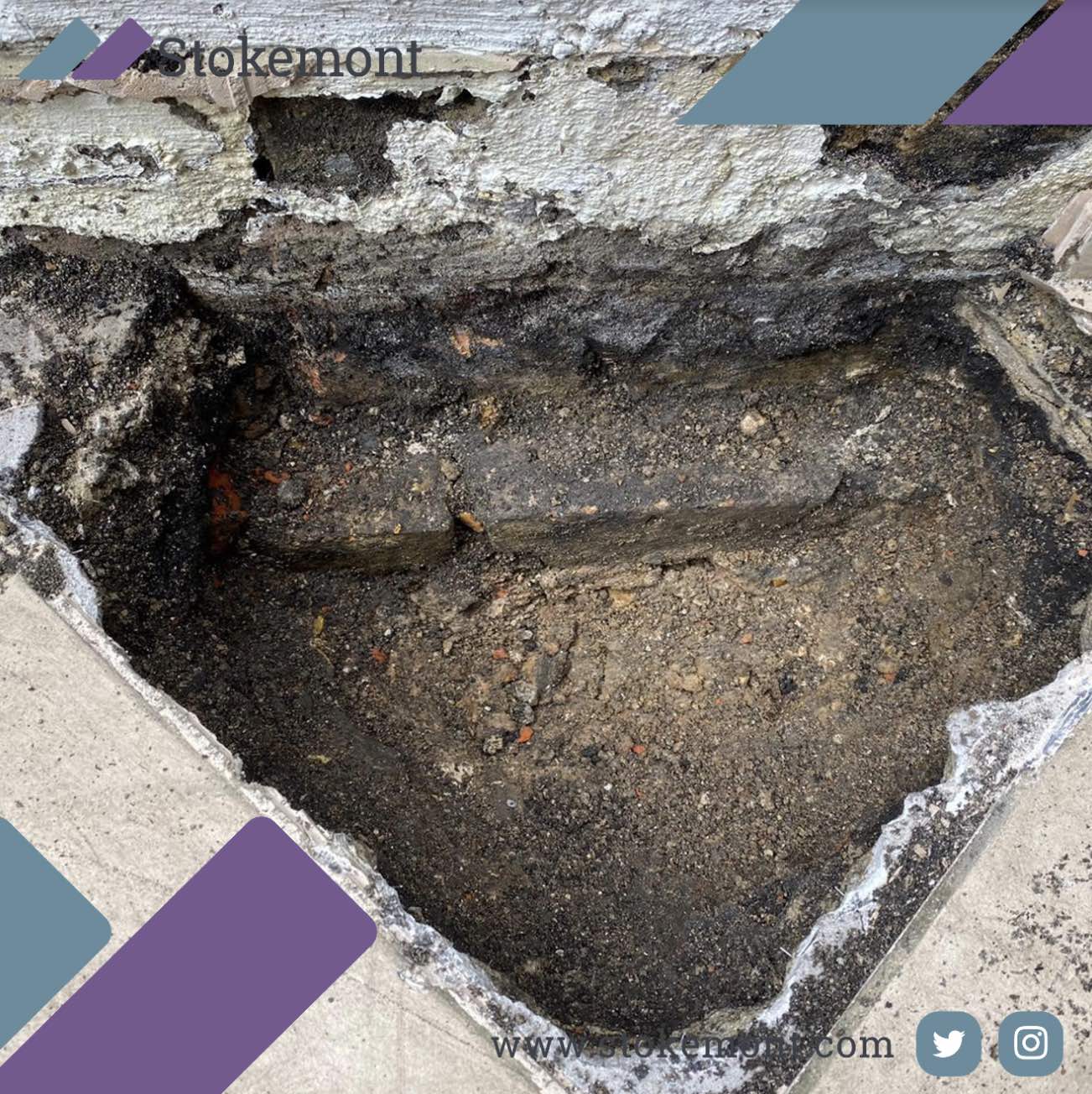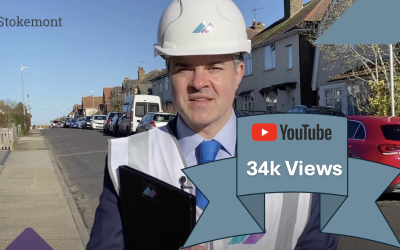On today’s Property Surveying blog post topic we are going to be discussing party wall surveying and the procedures that come into play if you are underpinning a party wall.
Underpinning a party wall, or undertaking any other form of underpinning is considered to be a high risk type of structural work. Therefore the party wall procedures that surround this type of work carry with them a lot more careful consideration and overall review of the adjoining owner’s property, from the perspective of the building owner’s work.
Underpinning effectively involves the underside of the existing foundation or corbel footing being dug out, with new concrete then installed beneath it and a dry mix of concrete installed between the underside of the foundation and the top side of the new concrete.
Underpinning is required in order to strengthen and solidify the foundations and structure of the adjoining property thereby enabling the building owner to safely undertake and execute their works with the least amount of risk possible.
The Party Wall etc Act 1996, covers underpinning in the following wording:
to underpin, thicken or raise a party structure, a party fence wall, or an external wall which belongs to the building owner and is built against a party structure or party fence wall
If a building owner wasn’t to underpin, they would effectively be placing the adjoining owner’s property at both a short and long term structural risk and are unlikely to get the sign off from Building Control to progress with their works.
As party wall surveyors, when underpinning is noted on a building owner’s proposals we inherently take a far closer look at the works from the overall perspective of the adjoining owner’s property. The review will very much ensure that any risk associated with those works has been well considered by both the party wall surveyor, and in some cases an advising engineer, thereby ensuring that any risk associated with the underpinning is at its lowest possible level.
Some of the key considerations that a building owner needs to take into account when considering underpinning, is that first and foremost the procedurals will need to be carefully set out and considered by both the building owner’s architect, building owner’s structural engineer, and the actual contractor who is going to undertake the works on site.
All of these three parties will need to work together to ensure that there is a full understanding of what needs to be done. In many cases these parties may need to work up a method statement for the works in tandem, or in a combined approach.
As party wall surveyors, we will be looking for assurances that the proposals have been well considered, and it isn’t just a simple speculative approach, or an approach whereby the adjoining owner’s structure could be placed at a disadvantage.
Generally speaking the way in which a surveyor can ensure that risks are as low as they can be and the proposals are considered are as follows;
Security for Expenses
It will likely be common that the adjoining owner, either directly, or via their party wall surveyor, will request security for expenses.
The Party Wall etc Act 1996, covers Security in the following wording:
An adjoining owner may serve a notice requiring the building owner before he begins any work in the exercise of the rights conferred by this Act to give such security as may be agreed between the owners or in the event of dispute determined in accordance with section 10
Security for expenses is the vessel set out by the Party Wall etc. Act 1996 and is in place to ensure that the adjoining owner has the legal right to request a sum of money, or a security amount, thereby safeguarding their property in the event that for whatever reason the building owner commences their works, however stops, stalls or delays them partly through.
This temporarily would place the adjoining owner’s structure at a higher risk and therefore security enables the adjoining owner to quickly instruct a contractor to either back fill the open trenches or complete the underpinning, thereby placing their structure at its previous stability.
Advising Engineers
The party wall surveyor acting on behalf of the adjoining owner will have the legal right to request for the input of an advising engineer.
The advising engineer’s role would very much be to inform the surveyor as to the underpinning approach that has been implemented, ultimately ensuring that the procedures are towards the lower realm of risk, while also ultimately ensuring that they are undertaken in a manner which fully considers the adjoining owner’s structure as a whole.
Advising engineers aren’t there to redesign or pick fault in the overall underpinning design, they are however in place to ensure that whatever works are found are executed smoothly and without issue.
Under The Party Wall etc. Act 1996 it is the building owner who will have to bear the advising engineer’s reasonable costs.
Movement Monitoring
Movement monitoring is becoming increasingly more common these days, as it is not only now more widely accepted as a sensible addition to works, it is also now much more affordable.
Movement monitoring is the process whereby the adjoining owner’s structure will be monitored throughout the course of the building owner’s works, thereby ensuring that any risk or issue associated with the works could result in movement is detected at the earliest opportunity.
This will ensure that the building owner’s team, and ultimately the adjoining owner’s advisers have the opportunity to deal and address the issue sooner rather than later and in many cases stopping far more extensive damage from occurring to the adjoining owner’s property.
Underpinning a party wall or any other structure does indeed carry additional risk and time, and therefore as a building owner if you are planning on undertaking these types of works, it is likely that your neighbour’s party wall surveyors fees are likely to be towards the upper end of the spectrum. Ultimately there is going to be added desktop time in considering the proposals, discussions with advisers, and ultimately a longer inspection on site, potentially additional inspections given the inherent need for professional input throughout the course of the works.
Here at Stokemont, we regularly undertake works that include and involve underpinning and have dealt with all forms of underpinning to flats, houses and commercial buildings.
If you would like to discuss your proposals with our team of qualified and experienced surveyors give us a call today and we will be more than happy to assist and advise you.




